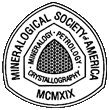 |
The Mineral Identification Key |  |
 |
The Mineral Identification Key |  |
Streak is simply the color of a mineral powder. Many minerals have a different color when powdered than they do in crystal or massive forms. The color may be entirely different, or it may be a different shade. Quite a few minerals give a powder streak that is lighter in color than the whole crystal or massive pieces. A streak is usually obtained by dragging a sharp edge, grain, or point of a crystal across a streak plate – which is simply an unglazed piece of porcelain tile, such as those used in bathrooms and kitchens. (If you get your streak plate from a home improvement shop be sure what you get is unglazed porcelain – not plastic or some other material.) A porcelain streak plate has a relative hardness of about 6½. So minerals of that hardness and greater can not be tested on it – they’ll only scratch it. Some geologists use a steel file to test the streak of minerals with a hardness of 6 to 6½.
Streak plates tend to end up covered with traces of mineral powder in various colors. They can be "refreshed" by sanding them with fine emery sandpaper – 220 grit or higher. Do not use a coarser grit, as it will roughen the surface of the streak plate.
Some minerals can be difficult to get a good powdered streak from. As with other tests, repetition usually pays off. Always try to use a sharp edge or point, rather than just dragging the mineral across the streak plate willy-nilly. While some soft minerals give a streak easily no matter how you drag them, others will not streak well unless you use a small surface area of the mineral to get the streak. Get in the habit of looking for and using a sharp edge, grain, or the point of a crystal.
Return to Key: Step 4
[ Table of Contents ] [ Introduction ] [ Identification Kit ] [ Mineral Properties ] [ Environments & Associations ] [ In Conclusion ] [ The Mineral ID Key ]